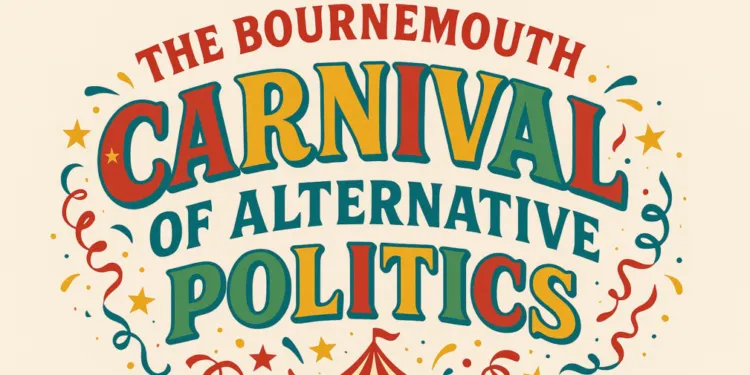Table of Contents
David Thunder
David Thunder is a researcher and lecturer at the University of Navarra’s Institute for Culture and Society in Pamplona, Spain.
The official story circulating on BBC and echoed by government and police spokespersons is that the riots and unrest seen in the UK in recent weeks are the product of a tiny minority of “far-right” hooligans and criminals, egged on by “disinformation” about the circumstances of the awful murder of innocent children in Southport, in particular the identity of the 17-year-old assailant, who was initially alleged to be a Muslim refugee, and later turned out to be a Welsh-born citizen born to Rwandan parents. This official story is not, strictly speaking, false. But it is only half the story.
The race riots, street violence, and public unrest we have seen in recent weeks have complex underlying causes and are not susceptible to any simple, one-dimensional explanation. Yet in their eagerness to condemn “far-right” rioters and looters, many public commentators omit to mention that the visceral anger of the rioters is really just an extreme and unlawful expression of the anger and frustration of many ordinary, law-abiding citizens, whose concerns about immigration and its impact on their communities are usually either ignored or blithely dismissed as “disinformation” or “far-right” propaganda.
Don’t get me wrong: I’m not suggesting for a second that it is in any way justified to hurl rocks at a mosque, injure police officers, set refugee accommodation centres on fire, engage in disorderly conduct, or intimidate people of other religions or ethnicities. I’m not suggesting for a second that anti-immigrant violence should be tolerated or encouraged.
But I would suggest that the condemnation of “far-right” agitation and violence should not lead us to overlook the broader societal discontent and fragmentation that such violence emerges from. Our condemnation of far-right violence should not be allowed to blind us to the fact that a very large proportion of citizens who express disquiet over immigration policy, or attend public rallies to raise awareness of their concerns, are not violent thugs, or “far-right” agitators: just regular, law-abiding citizens who are worried about how poorly controlled immigration will impact their access to housing and public services, or the safety of their streets, or the cohesion and prosperity of their neighbourhoods.
If deep discontent with the UK’s immigration policy was restricted to “far-right” hooligans, we could not explain the remarkable success of the Brexit movement, one of whose primary selling points was its opposition to “mass immigration,” which saw through a successful Brexit referendum in 2016. Nor could we explain the fact that in the 2024 elections, Nigel Farage’s Reform Party, with its call for stricter controls on immigration, managed to win 15 per cent of the popular vote, in a first-past-the-post system in which many of the Reform voters knew they were likely handing the election to Labour.
Of course, it is psychologically comforting to blame a social problem on a single scapegoat. It makes you feel more comfortable because the problem is contained and limited to whomever you have chosen to scapegoat – be it those pesky refugees, or the Muslims, or the Jews, or the conservative hillbillies, or the “far right.” But it may also be myopic, if the problem happens to be a complex one, with multiple underlying causes.
Those who, in the face of growing unrest surrounding immigration and race, limit themselves to condemning far=right violence, are missing out on a golden opportunity to open a sophisticated public conversation about fragmented communities across the UK, about the real and perceived failures of immigration policy, and about the reasons why immigration remains such a “hot button issue” in towns and cities across Britain.
Public disquiet in the UK over immigration policy is real and goes far beyond “far-right” agitation. Even when that disquiet is not on the front pages of British newspapers, it continues to bubble under the surface, as some communities feel that their access to public services and housing, as well as the future of their way of life, are threatened by disproportionate levels of immigration, including illegal immigration.
According to a 2023 analysis of professional opinion polls undertaken by the Migration Observatory, 37 per cent of Britons believe immigration should be reduced “a lot,” and 15 per cent believe it should be reduced “a little,” compared with six per cent who believe it should be increased “a lot” and eight per cent who think it should be increased “a little.” In short, over half of the population believe there is too much immigration, while more than one in three believe there is far too much immigration.
The superficiality of the “official” British response to the unfolding unrest may come down to a sort of wishful thinking: if we just keep the focus on the “far right,” then we can just round up the culprits, pack our bags, and go home. After all, what politician or head of police wants to grasp the nettle of a racially charged issue like immigration, in a way that seriously engages with the demands of disgruntled citizens and communities?
Nevertheless, until public authorities and opinion leaders start to respectfully engage with citizens who believe illegal immigration is out of control, as well as communities that worry over the impact of immigration on social cohesion, housing, public services, and public finances, the disquiet and resentment will continue to brew. Sadly, we can expect more unrest and disorder if public authorities do not engage in a respectful way with citizens’ legitimate fears and concerns.
This article was republished by the Brownstone Institute from the author’s Substack.









